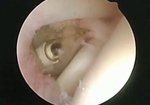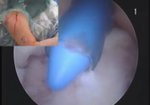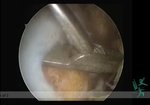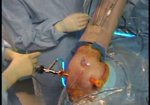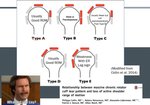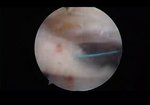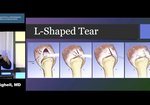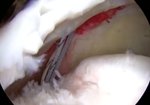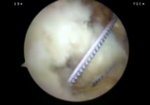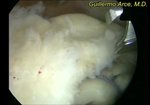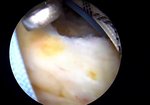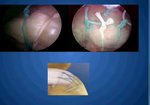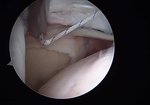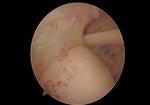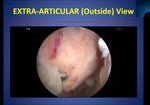Video Player is loading.
Current Time 0:00
/
Duration 0:00
Loaded: 0%
0:00
Stream Type LIVE
Remaining Time -0:00
1x
- 0.5x
- 0.75x
- 1x, selected
- 1.25x
- 1.5x
- 1.75x
- 2x
- Chapters
- descriptions off, selected
- captions settings, opens captions settings dialog
- captions off, selected
This is a modal window.
Beginning of dialog window. Escape will cancel and close the window.
End of dialog window.
10 seconds
Playback speed
This is a modal window. This modal can be closed by pressing the Escape key or activating the close button.
1,329 views
April 6, 2021
The rotator interval provides stability against inferior and posterior translations of the head of the ...
read more ↘ upper arm bone within the shoulder joint, in particular when the arm is externally rotated.
Deficiencies or pathology of the rotator interval contributes to instability of the shoulder joint in patients with excessive inferior and posterior translation. The name of this particular interval is derived from its situation between the supraspinatus and subscapularis muscles. Both muscles are part of the rotator cuff and the interval is located on the anterior side of the shoulder joint. Structures that can be found within the rotator interval are the superior and middle glenohumeral ligaments and the long head of the biceps tendon. These structure contribute to restricting motion of the head of the upper arm bone within the shoulder joint and to stability of the biceps tendon.
In patients with posterior and multidirectional instability of the shoulder which show persistent inferior or inferoposterior translation, even after repair of the shoulder labrum and the inferior and middle glenohumeral ligaments, rotator interval closure is performed.
↖ read less
read more ↘ upper arm bone within the shoulder joint, in particular when the arm is externally rotated.
Deficiencies or pathology of the rotator interval contributes to instability of the shoulder joint in patients with excessive inferior and posterior translation. The name of this particular interval is derived from its situation between the supraspinatus and subscapularis muscles. Both muscles are part of the rotator cuff and the interval is located on the anterior side of the shoulder joint. Structures that can be found within the rotator interval are the superior and middle glenohumeral ligaments and the long head of the biceps tendon. These structure contribute to restricting motion of the head of the upper arm bone within the shoulder joint and to stability of the biceps tendon.
In patients with posterior and multidirectional instability of the shoulder which show persistent inferior or inferoposterior translation, even after repair of the shoulder labrum and the inferior and middle glenohumeral ligaments, rotator interval closure is performed.
↖ read less
Comments 0
Login to view comments.
Click here to Login

